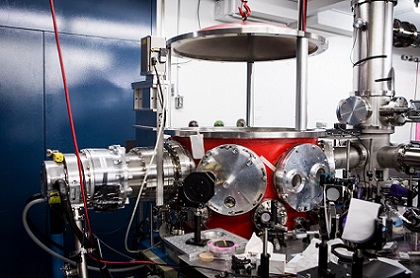INRS researchers have pushed the boundaries of high-energy laser pulse propagation, with reliance on the observation of high-energy multidimensional solitary states (MDSS), allowing the direct generation of extremely short and intense laser pulses that are highly stable in time and space.
Typical laser systems restrict their operation to a single transverse mode, which puts an upper limit on laser technology. Higher dimensions have so far been considered detrimental, as they are prone to instability and collapse.

INRS researchers at the Advanced Laser Light Source facility were able to observe high-energy multidimensional solitary states that enable the direct generation of extremely short and intense laser pulses that are highly stable in time and space. Courtesy of Josée Lecompte.
In their work, the researchers successfully observed multidimensional wave-packets driven by picosecond near-infrared pump pulses in a gas-filled hollow-core fiber. The method generated high-energy and spatiotemporally engineered coherent light-fields. The research marks theoretical advances that are enabled by complex numerical simulations and systematic experimental studies. Scientists performed the work in the Advanced Laser Light Source (ALLS) facility at INRS, discovering, ultimately, that light at high-energy levels behaves differently than initially thought, said Reza Safaei, a Ph.D. student at INRS.
The researchers designed the system to work in an environment in which nonlinear enhancement happened by itself. Interactions between multidimensional states caused the laser pulses to self-organize toward highly stable multidimensional states, which, according to Safaei, was a surprise on par with hearing a note come out of a drum, as the solitary states come out of highly unstable chaos.

“The immediate technological impact of this work is the generation of few-cycle pulses from picosecond Yb driver lasers using a simple, robust, and efficient approach that provides a new laser technology for strong-field physics,” said Guangyu Fan, also a Ph.D. student at INRS.
The technology is especially useful for scaling tabletop extreme-UV (EUV) and soft x-ray sources up to higher photon energies due to the longer central wavelength of the output beam, said François Légaré, scientific leader of the ALLS facility.
“As we look to the future, lasers and amplifiers that can elegantly work in multidimensional states may have significantly higher power than devices based on a single mode, with significant controllable nonlinear enhancement,” he said. “This possibility extends beyond ultrafast laser technology to all of laser science, since dimensionality and spatial/spatiotemporal nonlinearities represent key limitations for high-power lasers of all kinds.”
The team believes research will enable the development of compact high-power laser systems with a wide variety of industrial applications including micromachining and material processing. Additionally, the technology is being used to develop compact tabletop, ultrashort x-ray sources with potential applications for tracking ultrafast phenomenon such as chemical reactions and magnetization dynamics, and for high-spatial resolution biomedical imaging in the water window spectral range.
The research was published in Nature Photonics (www.doi.org/10.1038/s41566-020-00699-2).